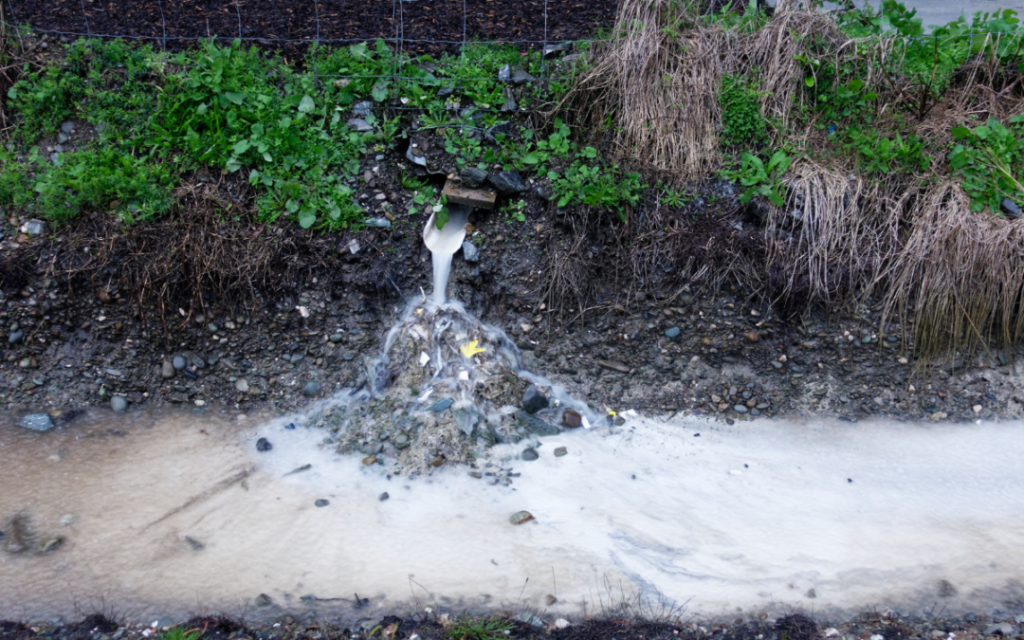Pollutants in Runoff Water
Have you ever considered which pollutants and contaminants are on our roadways and what happens to those pollutants when it rains? This is a topic that many of us rarely think about, but stormwater runoff is something we should consider. It affects our environment and comes along with legal requirements.
According to the U.S. Department of Transportation’s Federal Highway Administration, “the most common contaminants in highway runoff are heavy metals, inorganic salts, aromatic hydrocarbons, and suspended solids that accumulate on the road surface as a result of regular highway operation and maintenance activities. Salting and sanding practices, for example, may leave concentrations of chloride, sodium, and calcium on the roadway surface. Ordinary operations and the wear and tear of our vehicles also result in the dropping of oil, grease, rust, hydrocarbons, rubber particles, and other solid materials on the highway surface.”
When it rains, these contaminants are washed away into storm drains, and, thus, into our lakes, ponds, rivers, and water supplies. Not only can this be hazardous to humans, but the pollutants, trash, and debris can be hazardous to marine ecosystems.
How can street sweeping mitigate contaminants in runoff water?
According to a 2-year study conducted in Cambridge, Massachusetts, street sweeping can significantly reduce the total particulate solids that could otherwise end up in our water supplies. The effectiveness of street sweeping is dependent on the type of street sweeper used. Generally speaking, the majority of street sweepers fall into one of three categories:
Mechanical Brush
Mechanical Brush sweepers are efficient at picking up leaves, larger debris, and gravel. However, they are ineffective at picking up fine particles.
Vacuum Assist
Vacuum Assist sweepers are effective at picking up fine particles, and they operate much like a household vacuum cleaner. They suck in air containing dust and debris, filter out the particles, then release the air back into the atmosphere.
Regenerative Air
Regenerative air sweepers successfully collect larger debris and fine particles found in cracks and crevices of roadways. They differ from vacuum assist sweepers in that they are non-pollutant—packed with a regenerative air system that won’t exhaust debris back into the atmosphere.
The 2-year study in Cambridge found that regenerative air sweepers are significantly more effective than mechanical brush and vacuum assist sweepers at reducing the total particulate solids that wind up in storm drains and water runoff. Street sweeping frequency plays a large part in the effectiveness, but at the monthly level, mechanical brush sweepers reduced total particulate solids by 4.2%, vacuum assist by 8.2%, and regenerative air by a whopping 27%!
More Clean of Texas is committed to our environment. Therefore, we only use regenerative air sweepers that are not only non-pollutant but are also powered by fuel-efficient technology.
Street and parking lot sweeping is considered Best Management Practice (BMP) by the Environmental Protection Agency (EPA) for stormwater runoff and fugitive dust control. A regularly scheduled sweeping program will keep your property compliant with local, state, and federal environmental regulations, minimizing pollutants that might otherwise end up in the air we breathe and the water we drink. Avoid costly fines associated with non-compliance while committing to the environment with regularly scheduled street sweeping and parking lot sweeper services.


